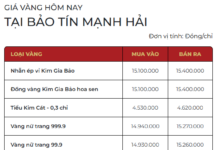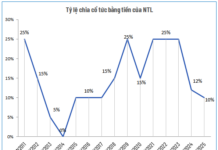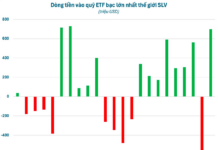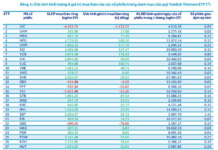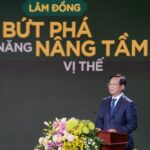The international recognition of the 2025 Nobel Prize in Economics for innovation dynamics underscores a core message: sustainable growth begins with humanity’s capacity for continuous learning and improvement. In practice, businesses can only maintain their competitive edge by reorganizing operations, refining product designs, and innovating business models to adapt to changing environments. Institutions play a pivotal role in fostering innovation by providing a level playing field, sufficiently large markets, and a well-connected knowledge ecosystem.
In Vietnam, the development strategy centered on science, technology, and innovation has moved beyond rhetoric, translating into concrete action plans over the past year. Innovation is no longer confined to research programs but has permeated sectors such as finance, education, healthcare, manufacturing, and public services. Startup ecosystems, policy experimentation mechanisms, and digital skills training programs are driving new momentum in the private sector. Simultaneously, the imperative to enhance labor productivity is catalyzing economy-wide transformation.
Understanding Innovation Correctly
To establish a shared foundation for effective action, it is essential to distinguish between innovation and invention. Innovation does not equate to creating new technology but involves finding more efficient ways to perform daily tasks. The central goal of innovation is to create value for customers, employees, and stakeholders, rather than solely pursuing technical breakthroughs. For instance, an operations department can restructure approval processes, standardize forms, and implement automation to reduce processing times from days to hours, freeing up resources for higher-value tasks. In service industries, businesses can redesign customer journeys, leveraging data analytics to identify bottlenecks and enhance satisfaction. This approach positions innovation as a disciplined, data-driven improvement process, not merely the product of spontaneous inspiration.
|
FIGURE 1: THE ESSENCE OF INNOVATION
|
Research highlights that innovation drives growth through the convergence of three factors: competition, value creation, and knowledge foundations. A healthy competitive environment compels businesses to innovate continuously, while a large market amplifies the expected returns on innovation efforts. A robust knowledge foundation—including high-quality higher education, reliable data, and standardized technical norms—accelerates technology diffusion and narrows the gap between leaders and followers. For businesses, this necessitates investing in both internal capabilities and strong ecosystem partnerships, from academia to intermediary organizations. Policymakers must uphold fair competition principles, promote market connectivity, and simplify access to knowledge.
In this context, the current moment is particularly significant: the 2025 Nobel Prize in Economics arrives as the global economy stands at a technological crossroads, with artificial intelligence poised to drive a new wave of growth. AI is not just an automation tool but a platform connecting theoretical and practical knowledge, shortening the journey from idea to application. Countries that consistently invest in core technologies—data infrastructure, computational power, algorithms, and cybersecurity—will significantly expand productivity and foster high-value industries.
Vietnam’s Strategic Choice with Resolution 57
The foundational principles outlined above are becoming the practical framework for Vietnam’s innovation efforts. The key question now is: What specific actions is Vietnam taking to translate this theoretical framework into tangible results? A pivotal milestone is the issuance of Resolution 57 in late 2024, which identifies breakthrough priorities to establish science, technology, and innovation as the pillars of growth. A critical breakthrough lies in embracing risk and venture capital for scientific and technological research. Subsequently, Government Resolution 03 operationalized this vision through clear action plans focused on four key solutions: institutional refinement, financial resource mobilization, high-quality human resource development, and data infrastructure construction.
Resolution 57 is implemented across five strategic directions, as illustrated in the figure: (1) defining 2030–2045 targets with measurable innovation and productivity indicators to guide resource allocation; (2) prioritizing investment in science, technology, innovation, and digital transformation through task-based procurement, public-private co-funding, and shared data infrastructure; (3) reforming R&D budget management by shifting from input control to outcome-based governance, expanding lump-sum mechanisms, open procurement standards, and challenge-based commissioning; (4) embracing controlled risk in new technology projects by establishing sandboxes, encouraging venture capital, allowing research-commercialization delays, and enhancing risk governance and cybersecurity; (5) enhancing implementation feasibility through strong decentralization, coordination hubs, budget-linked KPIs, and independent oversight. The overarching principle is to empower scientists as key drivers: valuing expertise, improving compensation, ensuring academic freedom, and fostering accountability to shorten the idea-to-application gap and fuel new growth.
At the institutional level, controlled experimentation mechanisms and open standards are encouraged to accelerate the journey from idea to implementation. Financially, long-term capital mobilization and public-private co-funding mechanisms share risks in long-cycle technology projects. In human resources, reskilling and digital upskilling programs help workers adapt swiftly to new technologies. For data infrastructure, the focus is on ensuring connectivity, interoperability, and data quality to enable analytics, automation, and AI applications.
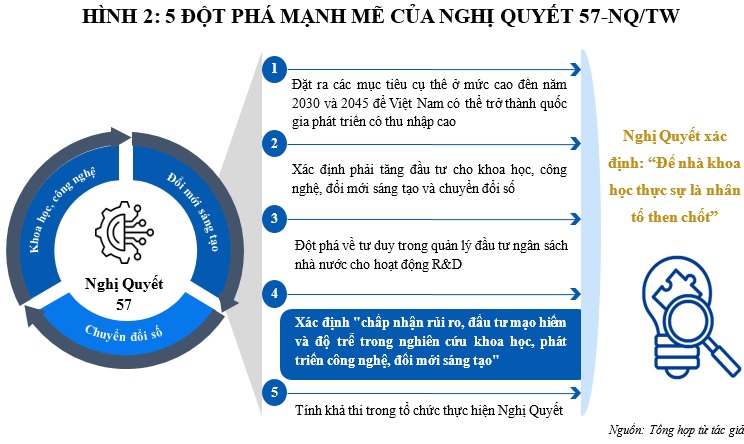
At a deeper level, innovation is essential for addressing productivity bottlenecks. Many small and medium-sized enterprises still rely on manual processes, personal experience, and fragmented data, leading to hidden costs and high error rates. Digitizing processes standardizes inputs, clarifies responsibilities, and reduces processing times. Data standardization enables more efficient system integration, minimizes redundant data entry, and enables real-time analytics. Analytical tools optimize decision-making, from shift scheduling to demand forecasting, ensuring precise resource allocation.
Drawing from the recent Nobel Prize research and Vietnam’s ongoing innovation practices, it is clear that innovation ultimately requires the courage to abandon outdated methods in favor of more effective approaches in a rapidly evolving technological and market landscape. The difference lies not only in technical tools but also in political commitment, disciplined execution, and progress measurement capabilities. When a competitive institutional framework, high-quality data infrastructure, and long-term capital converge, daily incremental improvements accumulate into significant productivity gains, supporting long-term economic growth.
– 10:00 16/10/2025
Ho Chi Minh City: Vietnam’s Megacity and Engine of Growth
In just a few days, the Ho Chi Minh City Party Congress will officially commence. This event transcends local politics, marking a pivotal moment in the nation’s development. As the first Congress following the city’s expansion through the merger with Binh Duong and Ba Ria – Vung Tau, it heralds the birth of a megacity boasting over 14 million residents. This new metropolis stands as Vietnam’s premier hub for industry, services, finance, and maritime trade.
Vietnam’s Largest Province Secures Nearly VND 35,000 Billion in Investment Capital Today
The People’s Committee of Lam Dong Province has granted Investment Registration Certificates and Investment Policy Approval Decisions to nine projects, with a combined investment capital of nearly VND 35,000 billion.
Mr. Ly Hoai Van Officially Appointed as CEO of BVBank
Ban Viet Bank (BVBank) Announces Appointment of Mr. Ly Hoai Van as Chief Executive Officer Effective October 7, 2025.
BVBank proudly welcomes Mr. Ly Hoai Van as its new Chief Executive Officer, marking a significant milestone in the bank’s leadership journey. His tenure officially commenced on October 7, 2025, bringing a wealth of expertise and vision to drive BVBank’s continued growth and innovation.








